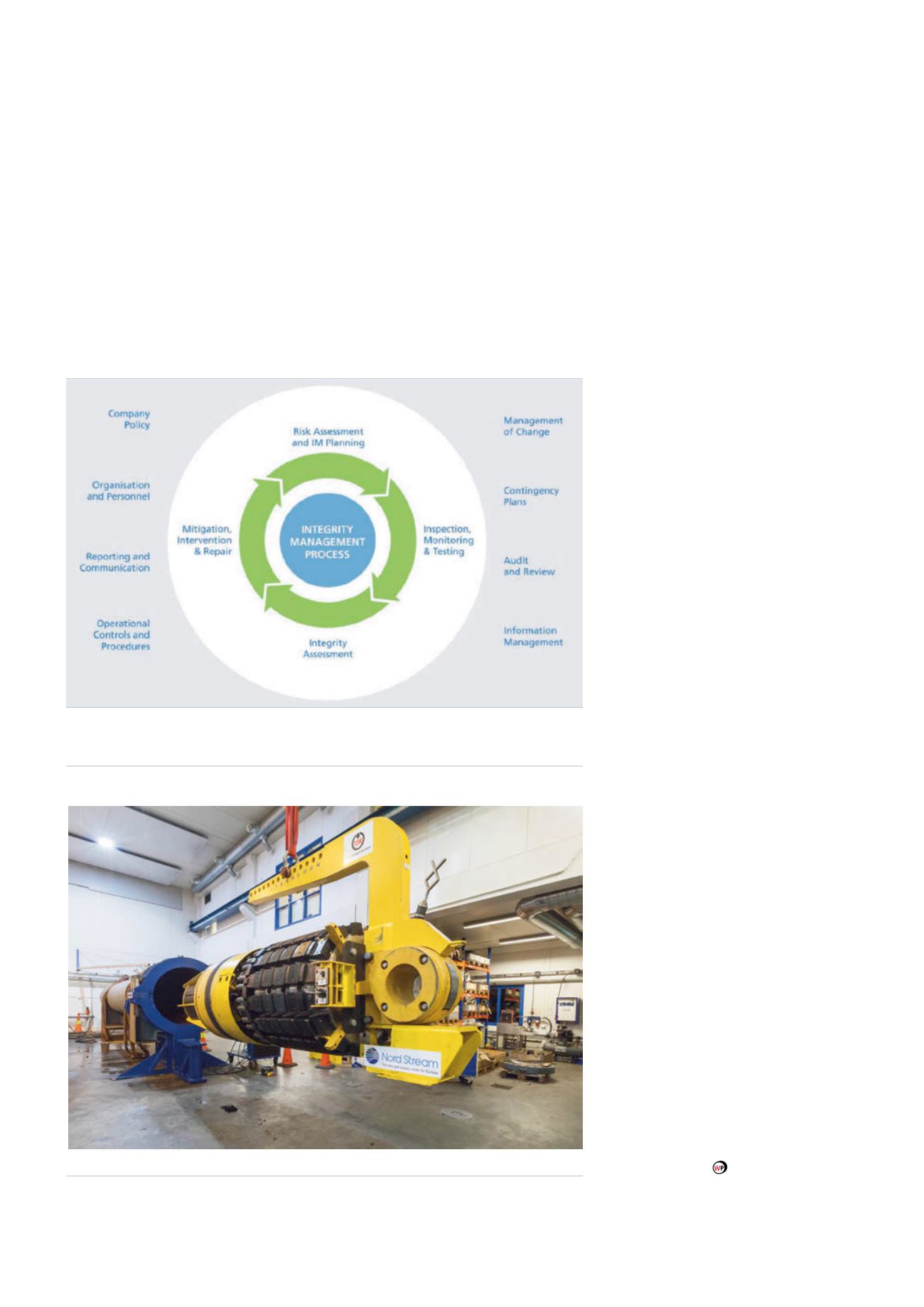
the hyperbaric weld tie-in of the 48 in. diameter pipeline
sections.
Further suppliers were contracted to develop specialised
equipment, among them Oil States Industries and TDW
Offshore Services.
What special tools have been developed?
We have invested in the development of tools and are
currently in the delivery and system integration testing (SIT)
phases of a full complement of state of the art pipeline
repair tools.
Specific tooling developed by TDW for Nord Stream
AG includes SmartPlug isolation tools, pipeline recovery
tools (PRT) with dewatering and pig catcher functionality
and pipeline end sealing plugs (PEPs), all suited for 48 in.
diameter. These would be used if major offshore repairs with
the need to isolate sections of the pipeline.
Other specialist tooling and equipment developments
through 2015 into 2016 include a clamp-on pig stopper and
SmartPlug launcher (CPS/CSL), an activated sealing pig (ASP),
subsea mechanical tie-in flange assemblies, as well as a
liquid/gas separator.
We are also in the process of
developing two structural and pressure
containment pipeline repair clamps,
which can be externally fitted over an
area of damage in order to provide a
permanent repair solution. Here we
partnered with Oil States Industries. For
the installation of the repair clamps, we
designed a dedicated installation system,
which suspends the clamp and positions
it precisely over the pipeline for
installation. It can be operated by ROV
and can be used in depth up to 214 m.
Now that Nord Stream has
been in operation for almost
four years, what are the first
learnings from a maintenance
perspective?
The conditions in the Baltic Sea are
certainly unique – as is our pipeline.
Nord Stream is the longest large-
diameter gas pipeline built to-date.
However, the pipeline technology and
maintenance have been tried and tested
in the North Sea and elsewhere. So there
were no surprises.
The results of our surveys show that
the pipeline is in good condition: as
expected, material integrity shows no
sign of corrosion. The pipeline shows
the expected signs of settling into the
seabed from its own weight and slight
shifts.
What we learned is that it has
certainly paid off to start setting up
organisational structures, find expert
personnel and contract suppliers early
on. Also important was to instil into the
organisation a sense that the cause of
integrity management and maintaining an
asset goes beyond checking for corrosion
but includes many functions within the
company. Everyone is pulling in the same
direction on this.
Figure 3.
48 in. pipeline recovery tool (PRT) during factory acceptance testing at TDW.
Figure 2.
The Nord Stream pipeline integrity management process defines the
company’s approach to mitigating risk and maintaining safe and reliable operational
integrity of the pipeline system.
22
World Pipelines
/
AUGUST 2015


